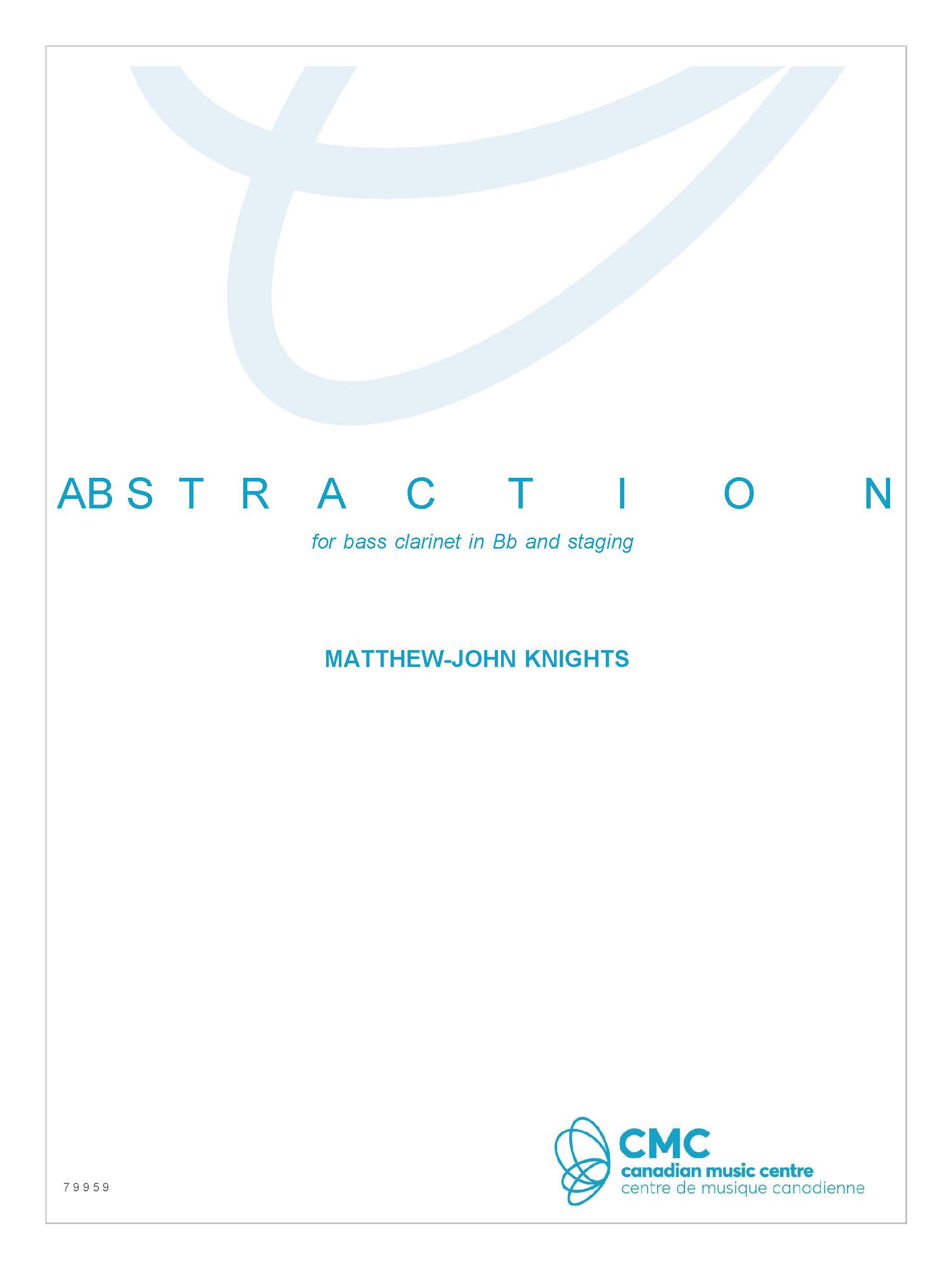“AB S T R A C T I O N” is a work for solo bass clarinet in B flat (transposing score; sounds a 9th lower than written) and staging. It is intended to be a very theatrical work, and the stage directions are every bit as vital to telling the story as the pitches and rhythms are to making the music come alive. As a result, this work must be memorized, ensuring that the performer can play with freedom and extreme expression without being hindered by the complexity of the score and its notation.
This piece tells a story, but on a very small scale. The narrative is never entirely clear and directed like it might be in an opera, but rather, it seeks to represent a moment in time, expanded over the course of several minutes. Essentially, it is a piece about a character, and her moment of paranoia.
“AB S T R A C T I O N” begins with anxious pacing, with the character muttering under her breath. When she plays, she begins with a multiphonic, which expands from silence to an overbearing quintuple forte. She is frustrated by the sound, but also, her eyes move side to side, anxious and awkward, checking if anyone heard the unearthly sound. She then plays a run, as fast as humanly possible, from the extreme low register, to the screaming altissimo; she freezes, in stunned silence.
Then the piece really begins, on page two. She plays for a bit, before showing signs of frustration, going so far as to scowl and flap her elbows dramatically. Then, there are moments of surprise: it is as if she is taken aback by the sudden high interjections in her own playing. But that feeling of suspicion returns, and quickly turns into a moment of paranoia. This suspicion/paranoia motif repeats several times throughout the piece.
There are moments of playfulness in the third page, with the high interjection returning, punctuated by moments of seriousness in a series of low gestures. She turns to face stage right: this is done out of frustration, as though the act of playing is boring or inane. When she rotates to stage left, it is done languorously. The multiphonic returns, as she is resigned for a moment, before oscillating side to side out of frustration, conveying feelings of fidgetiness. But then there is a sudden awareness that someone may be listening. The suspicion/paranoia transition motif returns.
New material enters on page four, but our character is stuck in her paranoia, eyes wide, until a sudden jump down to the lowest register, where she tries to block out the world. However, the paranoia slowly returns. There is a sudden release, as she decides to carry on playing, but this respite is temporary. As the new material expands, her ability to focus amidst the frustration and paranoia is challenged, and she turns various directions, begrudgingly returning to face forward, and returning her focus to the task at hand.
The suspicion/paranoia motif returns as her fear of being watched returns. It is repeated several times, eventually leading to the most extreme paranoia she has yet felt, accompanied by a repeated note, very high in the stratosphere. She breaks, at this moment, and has a freak out, playing random notes, with very screechy timbres, accelerating to a quintuple forte. During this freak out, her eyes move erratically and wildly in extremes, conveying her insanity she experiences as a result of feeling watched.
Suddenly, this moment cuts out, and after a long pause, eyes wide open, one of the opening motifs returns, contracting as time goes on. She tries to shake off the paranoia, even going so far as to roll her eyes dramatically. But then there’s a scowl, and, in a final gesture, on the bass clarinet’s lowest note, she experiences a moment of anger, that transforms first into being furious, and then into anguish. In the last moment of silence, she makes a face, completely deranged with eyes wide and crazy. We are left to question if the paranoia has won her over.

